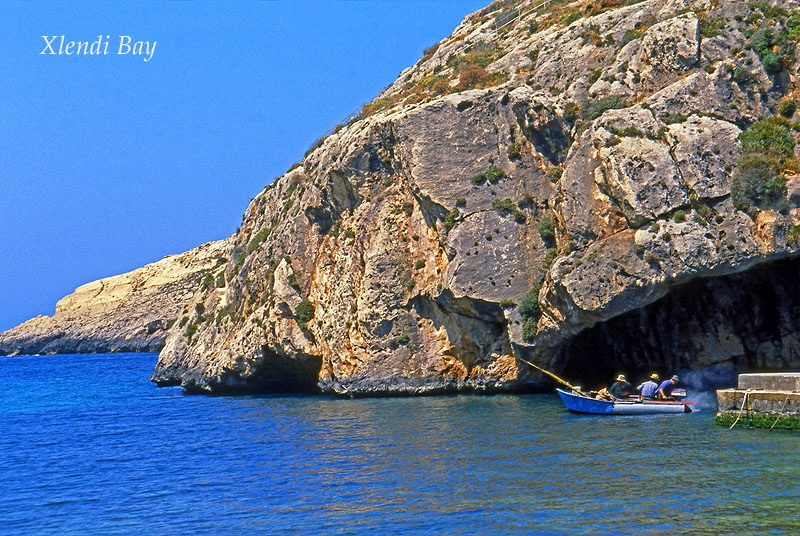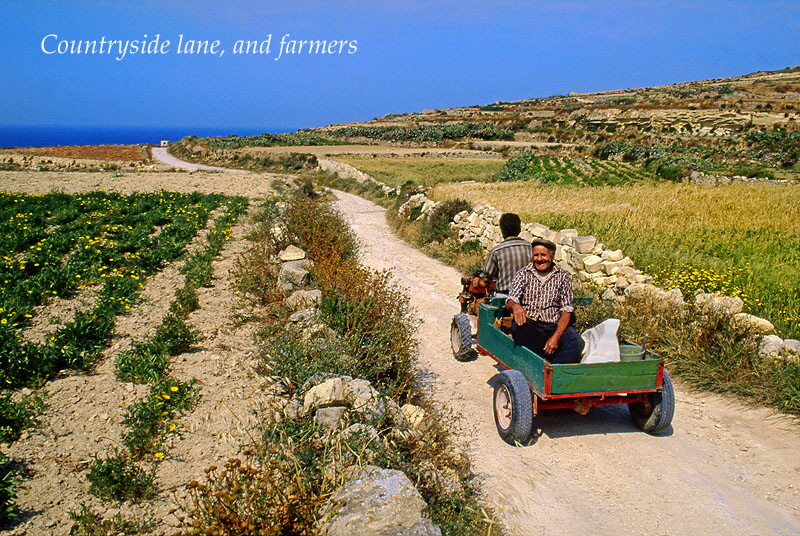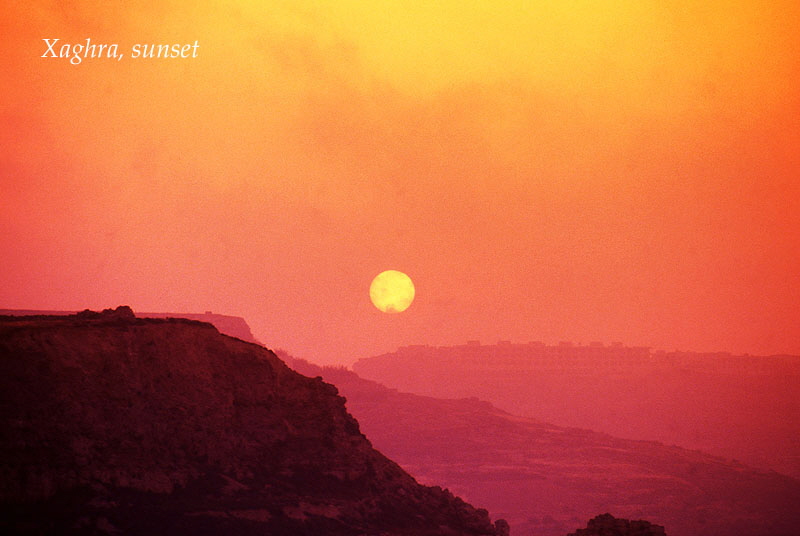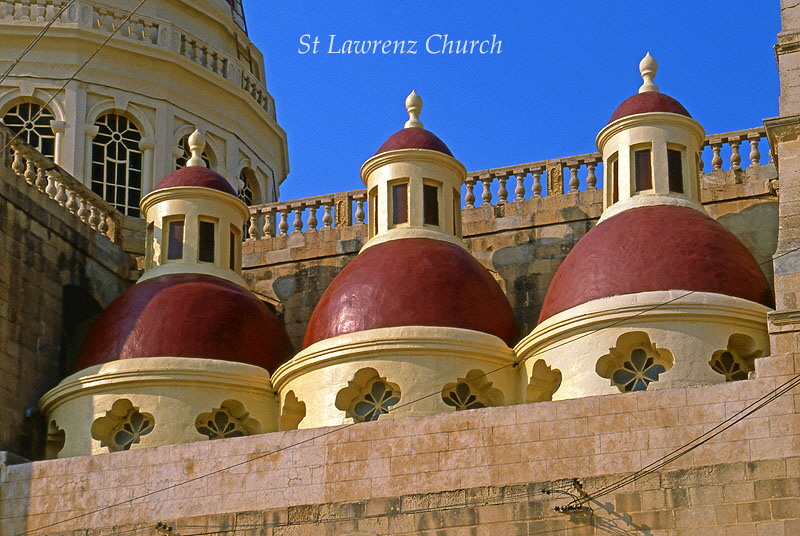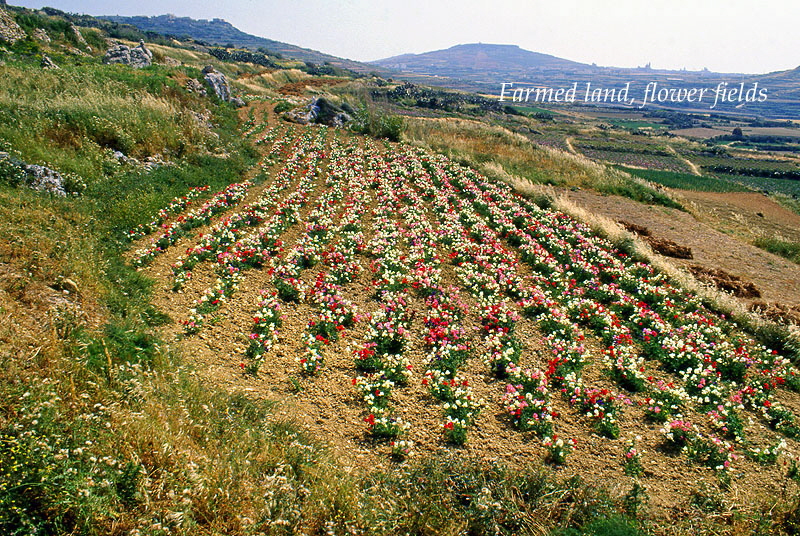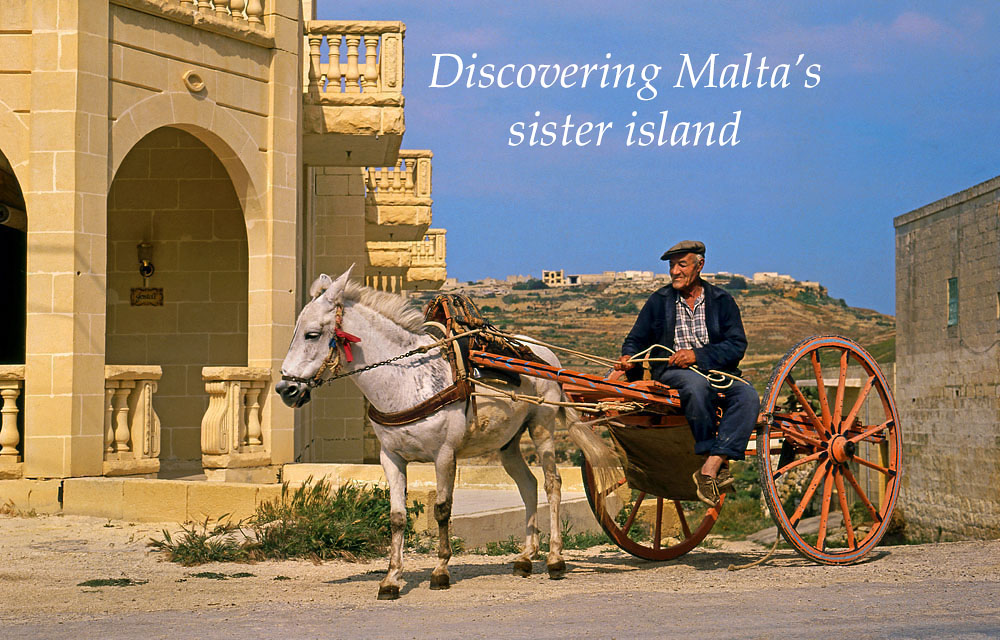
Finding rest in Gozo
If you’ve been to Malta and not visited Gozo, even on a day trip, you’re missing something exceptional. But for a quirk of nature, the tiny island of just 67sq km (26 square miles) would be joined to Malta, its larger and more famous neighbour. As luck would have it, a narrow channel off the north-west coast of Malta separates it.Such relative isolation has made Gozo one of those enviable places that has almost managed to disguise its presence from the rest of the world. In fact, few people have even heard of the island, let alone know where it is.
All of which add to its charm.

The ferry, which took me from Malta’s eastern tip to Gozo’s Mgarr harbour, contained an odd assortment of people - a party of Gozitan school children returning from a day trip on the mainland, a few tourists and several housewives weighed down with bags bulging with the result of a successful shopping spree.
Half an hour after leaving Malta we had covered three miles crossing and arrived at Gozo where the scenery was noticeably different. Gone were the rows of back-to-back houses, the tangle of television aerials and satellite dishes, grand hotels and traffic jams. Gozo has no airs or graces. It’s a simple, take-us-as-you-find-us community, earning its living through fishing and farming.
The Cornucopia Hotel near the village of Xaghra (pronounced Sha-hra), like much of the accommodation on the island, is actually a converted farmhouse. There is a homely atmosphere despite its modern facilities and swimming pools. The food is excellent. Dinner, served in the large dining room with its monastic arches and huge fireplace, was an enjoyable affair. Asparagus in hollandaise sauce, grilled local fish, home produce wine, and to round off the meal, goat’s milk cheese covered in fiery black pepper, eaten with chunks
of crisp Maltese bread.
Grilled local fish

I was up early morning, to take in the rural scenery and the greenery which equally matched in contrast with bright red poppy fields. The valley below and the view stretched as far as the coast in the distance. It all exuded tranquillity, and the quietness was only interrupted by the bird life, and the passing few farmers who paused to give me a friendly nod as they guided a small herd of sheep along the narrow country lane.
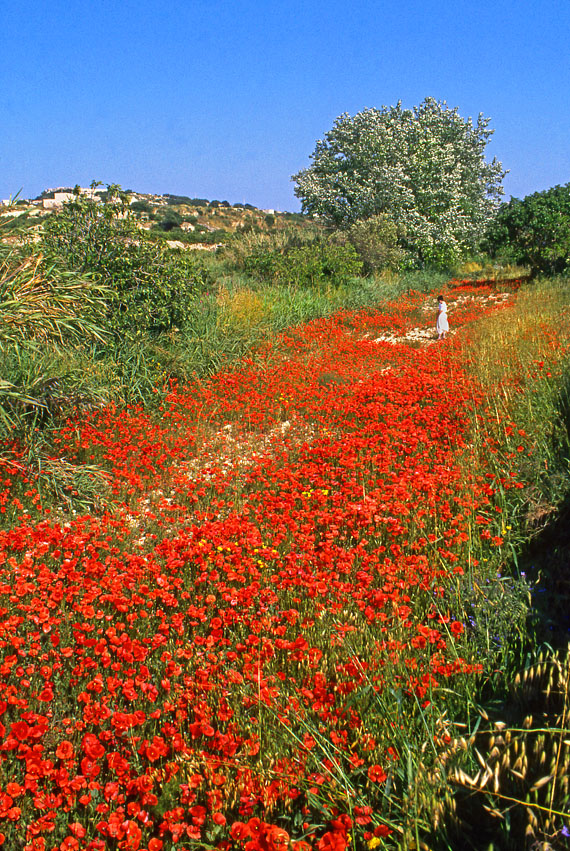



It didn’t take long to explore Xaghra village. Like all Gozo’s villages, a large baroque-style church graces the central square. At the time of my visit, the square was festooned with blue and white banners. No, not as I first thought to celebrate a saint’s day, but in fact, the village football team had just won the Gozitan equivalent of the FA Cup!
Signs point to Xerri’s Grotto from all over Xaghra. From the outside it just looks like any other house in the village, except for the large shuttered door with the sign displayed. Once inside, the old man who owns the house locked the door and led me down a spiral stairway to a small cave below. It was crammed full of strange-looking stalactite and stalagmite formations which, with a little imagination, can seem to resemble birds, animals and plants.
Baroque style church at Xaghra

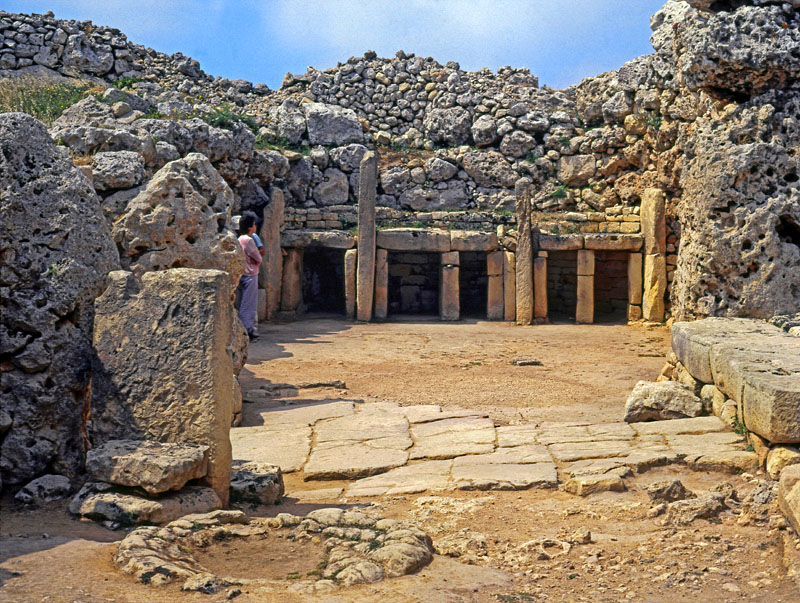
Ggantija Temple site
Just outside Xaghra is Gozo’s most important historic site. The Ggantija Twin Temples are recorded in the Guinness Book Of Records as the world’s oldest free-standing structures. They got their name from the gigantic slabs of stone that were used in the construction of the ancient temples. Built before the standing stones of Stonehenge in England, this UNESCO World Heritage Site dates back to around 3600 BC. It is one of the best preserved sites in the Maltese islands. Some prehistoric objects and statuettes can be viewed at the Gozo Museum of Archaeology. Not surprisingly, is it also the main attraction for day-trippers from Malta, but a word of warning, go to visit it early in the morning if you want to avoid the crowds.
Ggantija Temple site
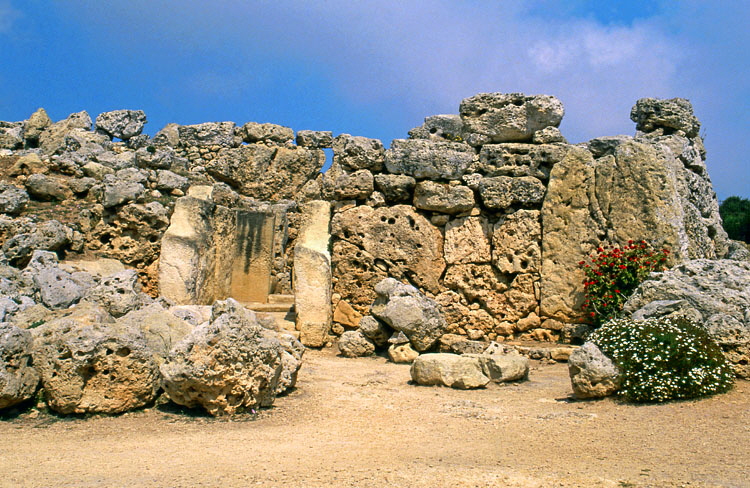
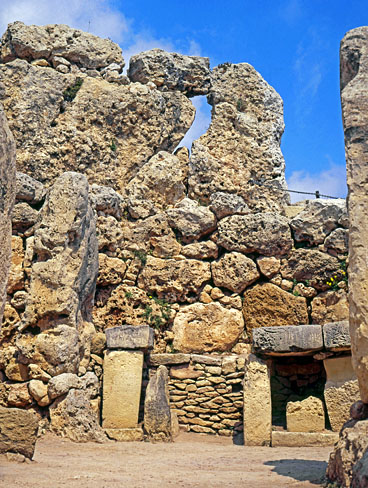
Victoria, also known by its older name, Rabat, is Gozo’s sleepy capital and the only town of any size. Most activity centres around the open-air market in Republic Street but even the market square becomes a car park in the afternoon when the locals retreat for their customary siesta.
Victoria Citadel
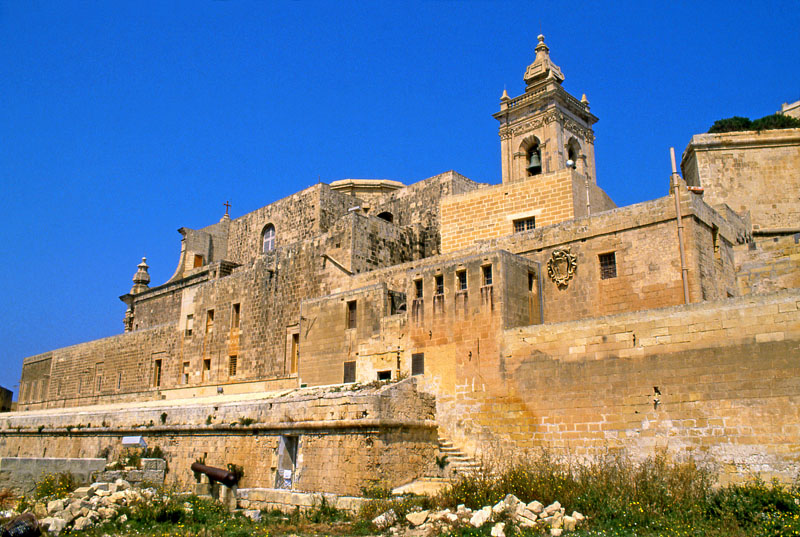
The sixteenth-century Citadel, perched above the town, dominates the view like a mother hen protecting her chicks. Many parts have been carefully restored, and the fort is visible from all over the island. A walk along the ramparts gives you panoramic views over the countryside and beyond. Built in 1697, the ornate Cathedral of the Assumption, with its elaborate interior and paintings is a beautiful vista of colour and architecture. There are a couple of museums too which give the visitor an insight into Gozo’s past.
Citadel cathedral
Citadel ramparts



To experience the island at leisure, a car is a must, and is inexpensive - you can hire one in Victoria from around 30 Euros a day. There are few signposts, but whichever direction chosen, Gozo’s patchwork quilt of brown and green terraced fields is bound to delight. If you do happen to get ‘lost’, just stop by a farmer on his horse-drawn cart or buggy, and he will direct you.
When I was there in early summer, daisies, poppies and sweet peas added colour to the landscape and gave a hint of perfume to the air. Farmers harvested peas, beans and potatoes. Old women sat knitting in the sunshine. Goats and sheep wandered at will, and with few vehicles about it was an unhurried way to see the island. And when the hunger pangs set in, just stop by a little village and the hint of freshly baked bread will tempt you to buy a loaf, along with some delicious cheese. Then choose your panoramic view, park along an untarmacked lane, and enjoy a picnic in the warm sunshine.
It’s hard to believe that an island just nine miles by five, can have a population of around thirty three thousand people, and yet be so peaceful.



Like Malta, Gozo has many lovely churches - almost 50 including smaller chapels. The Rotunda Church in Xewkija is one of the most spectacular. Built around the previous parish church, it was completed only in 1917 and boasts one of the largest domes in Europe. The Ta Pinu Sanctuary looks almost isolated by the surrounding countryside. It is admired for its beautiful architecture and sculptures carved from Maltese stone. The 19th century St Lawrenz Church is also worth visiting and is clearly distinguishable with its large red dome and smaller red cupolas.
Ta Pinu Sanctuary
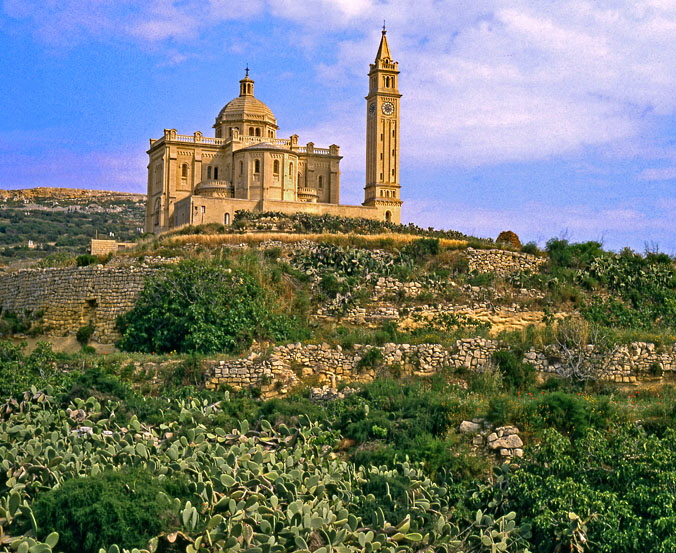
St Lawrenz Church

Gentle walks and hikes are some of the pleasurable activities in Gozo, as there are many almost all over the island. Hikes along the dramatic Ta Cenc cliffs or Dwejra Point coastal area offer magnificent scenery and is something every visitor should do. Along the coast are also many charming bays, like the Xlendi and Marsalforn. Mgarr Ix-Xini Inlet is a beautiful secluded spot, with a tiny pebble beach, calm turquoise blue waters, and is ideal for swimming or snorkelling.
Ta Cenc Cliffs
Ix-Xini Inlet
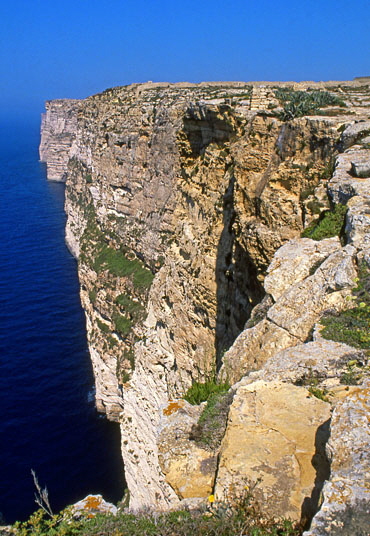

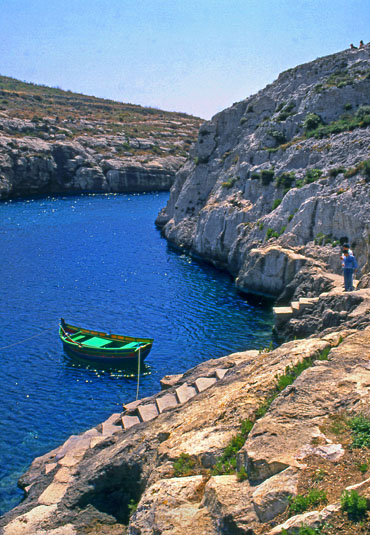
One unexpected sight along many of the islands’ coastal areas is the salt pans. And just outside Marsalforn are the Qbajjar salt-pans. From a distance, they look like an intricate mosaic made up of hundreds of different-sized geometrical shapes. An ingenious drainage system allows the water to evaporate and although it is not a major industry, several tons of sea salt are produced here every year. Like lace making, pottery and hand knitting, salt production is still very much part of the islanders’ way of life, that has been handed down through many generations.
Qbajjar salt-pans

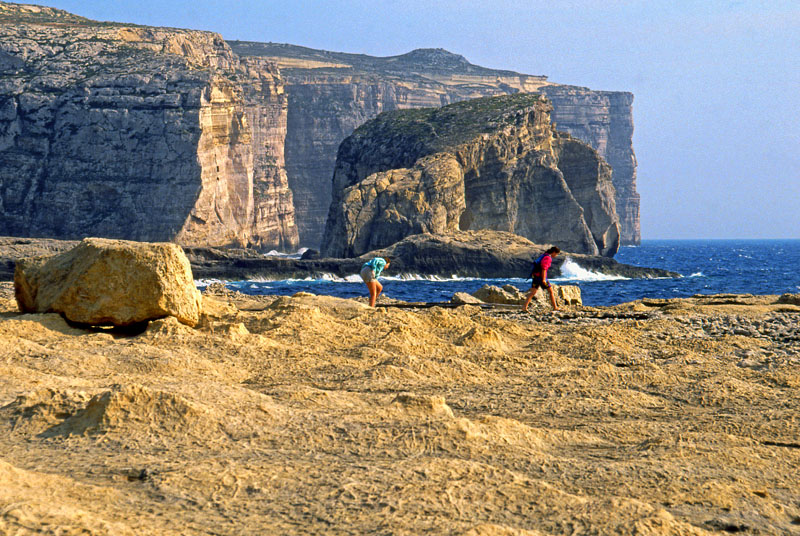
Dwejra Point, and Fungus Rock
Gozo’s most outstanding scenery is in the north west in Dwejra Bay. It is a natural blend of geology, seascapes, flora and rugged landscapes. Legend has it that the Fungus Rock, discovered by the knight of St John, had a special fungus growing on it which had healing properties. At Dwejra Point, is an ‘inland sea’, a seawater lagoon with a tunnel under the cliffs that goes out to the sea. Above the cliffs is Dwejra Tower - a watch tower. Until a few years ago, the main attraction and Gozo’s famous landmark was the ‘Azure Window’ natural archway which collapsed into the sea in March 2017. Today however, visitors and locals still arrive at the site to enjoy the area's natural beauty.
’Azure Window’, which collapsed in 2017
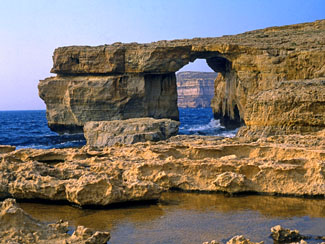
Dwejra Point, ’inland sea’
Dwejra Point, and Tower
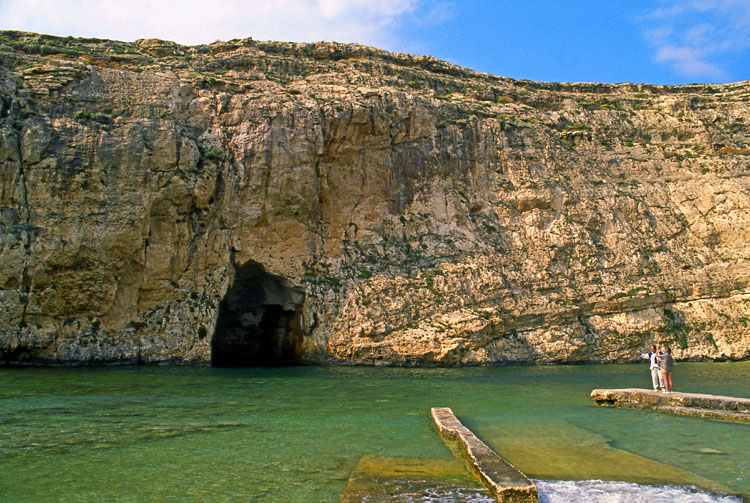

Gozo is not famous for its beaches. But for those who wish to idle away for a day or two, Ramla Bay and its golden-red sandy beach are undoubtedly the best. Apart from the statue of Our Lady erected by some graceful fishermen saved from a storm, I had it all to myself. High season visitors are unlikely to be so fortunate. Combined with nature trails and nearby walks, it’s a great relaxing spot on the island.
Ramla Bay beach
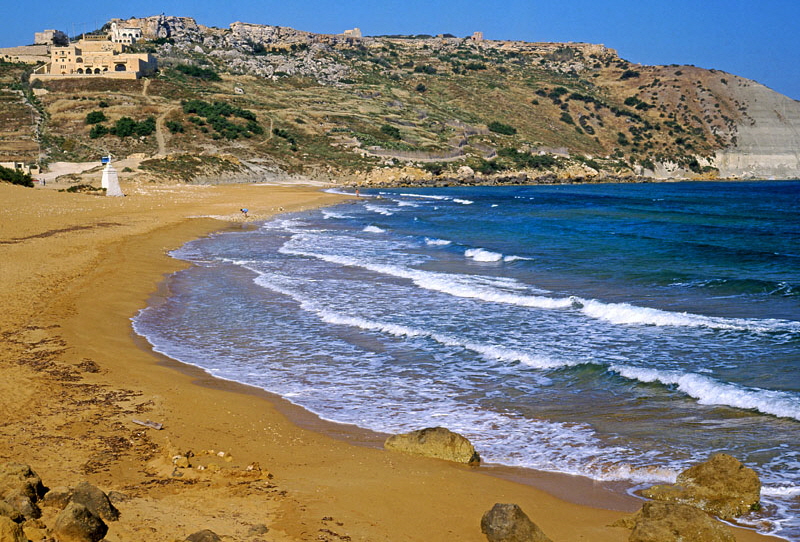
For such a tiny island, Gozo’s landscape is extremely varied. Its people are friendly and welcoming. For the discerning traveller, it will stand out as one of the few truly unspoilt gems of the Mediterranean.
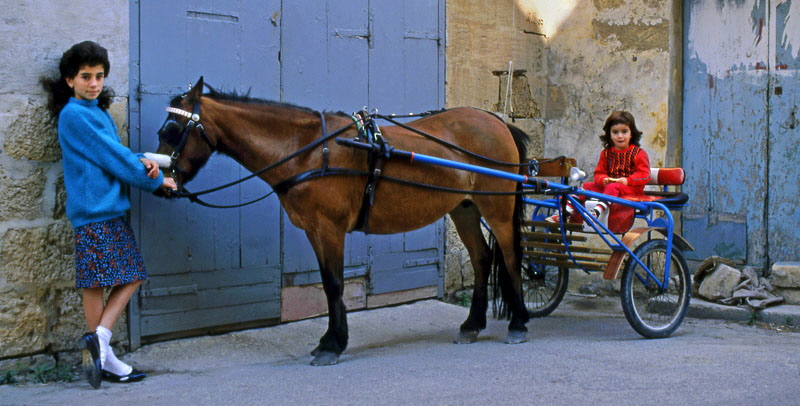
18 images here ©JAYTRAVELPHOTOS
© COPYRIGHT notice. The images on this site are for viewing only.
To purchase any, for personal or commercial use, please contact us at jaytravelphotos@aol.com
___________________________________________________________________________________________________________________________________________



